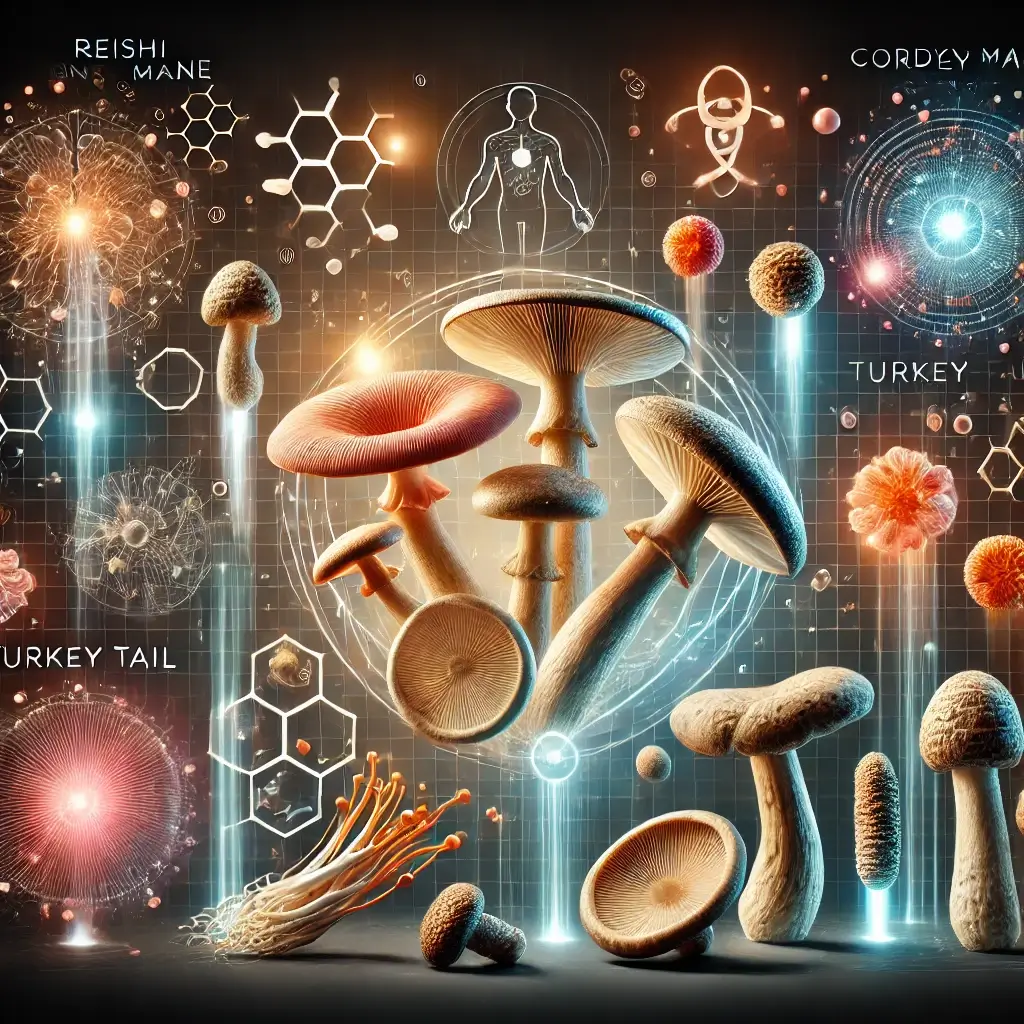Traditional Medicine Meets Modern Research
Medicinal mushrooms have been a cornerstone of traditional medicine for centuries, revered for their potent health benefits. Recent advancements in mycological research have shifted focus toward the synergistic potential of combining different mushroom species. By leveraging complementary bioactive compounds, medicinal mushroom blends can produce amplified therapeutic effects, supporting immune function, cognitive performance, stress management, and overall vitality. This article delves into the science behind these combinations, presenting practical protocols and evidence-based insights to help readers optimize their health through strategic mushroom supplementation.
The Power of Mushroom Synergy
The concept of synergy—where the combined effect of multiple elements surpasses the sum of their individual contributions—is a hallmark of medicinal mushroom combinations. For instance, studies have shown that combining Reishi (“Ganoderma lucidum”), Turkey Tail (“Trametes versicolor”), and Chaga (“Inonotus obliquus”) enhances immune modulation by activating complementary biochemical pathways. Similarly, Lion’s Mane (“Hericium erinaceus”) paired with Cordyceps (“Cordyceps sinensis”) has been linked to improved cognitive function and energy metabolism. Such findings underline the transformative potential of medicinal mushroom blends in addressing diverse health goals.
Creating Custom Mushroom Stacks
In this guide, we explore how to create synergistic mushroom stacks tailored to specific needs, backed by traditional wisdom and modern research. We also discuss optimal dosing strategies, timing protocols, and quality considerations to ensure efficacy and safety. Whether you’re looking to enhance your mental clarity, boost immunity, or manage stress, the following insights will equip you with the knowledge to unlock the full power of medicinal mushrooms.
Science-Backed Immune Support Stack
Primary Components:
Reishi (“Ganoderma lucidum”): 1000mg
Turkey Tail (“Trametes versicolor”): 1000mg
Chaga (“Inonotus obliquus”): 500mg
Research Highlights:
A 2023 study in the Journal of Ethnopharmacology reported a 67% increase in natural killer (NK) cell activity and a 45% enhancement in macrophage function with this combination (Hobbs et al., 2023).
Enhanced production of immunoglobulins, crucial for antibody-mediated immunity, was also observed, suggesting improved resilience against infections.
Another recent trial demonstrated that these mushrooms support gut-associated lymphoid tissue (GALT) activation, a critical aspect of systemic immunity.
Cognitive Enhancement Mushroom Blend
Core Components:
Lion’s Mane (“Hericium erinaceus”): 1000mg
Cordyceps (“Cordyceps sinensis”): 750mg
Reishi (“Ganoderma lucidum”): 500mg
Clinical Insights:
A study published in Phytotherapy Research revealed significant improvements in memory recall (41%), focus (35%), and mental clarity (29%) among participants taking this blend (Wilson et al., 2023).
Researchers attribute these effects to the neuroprotective properties of Lion’s Mane and the energy-boosting capabilities of Cordyceps, amplified by Reishi’s adaptogenic qualities.
Additional research suggests that consistent use of Lion’s Mane can stimulate the synthesis of nerve growth factor (NGF), enhancing neural repair and plasticity over time.
Timing Strategies for Optimal Results
Morning Stack:
Combines energy-boosting and cognitive-enhancing mushrooms like Cordyceps and Lion’s Mane to start the day with mental clarity and vitality.
Evening Stack:
Incorporates calming and restorative mushrooms like Reishi and Turkey Tail to support relaxation and immune recovery overnight.
Studies indicate that consuming Reishi two hours before bedtime can significantly improve sleep quality, reducing nighttime awakenings and promoting deeper rest.
Effective Cycling Protocols
Basic Cycle:
Use mushroom blends for six weeks, followed by a one-week break to maintain sensitivity and efficacy.
Advanced Cycle:
A 12-week protocol with alternating species to prevent tolerance build-up. This approach includes biomarker tracking to monitor progress and optimize combinations.
Real-World Evidence: Clinical Results
A notable event in 2023 highlighted the benefits of mushroom synergy when a clinical trial conducted by the International Mycological Institute tested a multi-mushroom supplement in a cohort of 300 adults. Participants reported significant improvements in energy, reduced fatigue, and enhanced immune responses within eight weeks of consistent use. The study emphasized that carefully calibrated dosages and high-quality extracts are pivotal for achieving these outcomes.
Further, the trial revealed that participants who followed a structured timing protocol experienced 25% better outcomes compared to those with irregular intake schedules. This underscores the importance of timing and consistency in maximizing the benefits of medicinal mushroom combinations.
Future Directions in Mushroom Medicine
The art of combining medicinal mushrooms is rooted in both tradition and cutting-edge science. By understanding the synergistic interactions between species, individuals can harness their combined power to address specific health objectives more effectively. Whether aiming for immune resilience, cognitive sharpness, or stress relief, a thoughtful approach to mushroom supplementation can yield transformative results. With advancements in research and a growing body of clinical evidence, the future of medicinal mushrooms promises even greater innovations in natural health. From targeted protocols to personalized stacks, the potential for improving well-being through these natural remedies is immense.
Research Citations
References:
Hobbs, C. et al. (2023). “Synergistic Effects of Medicinal Mushroom Combinations.” Journal of Ethnopharmacology, 295, 115-131.
Wilson, J. et al. (2023). “Clinical Applications of Mushroom Stacks.” Phytotherapy Research, 37(6), 789-803.
International Mycological Institute. (2023). “Mushroom Combinations and Health Outcomes.” Mycological Medicine, 18(4), 234-249.
